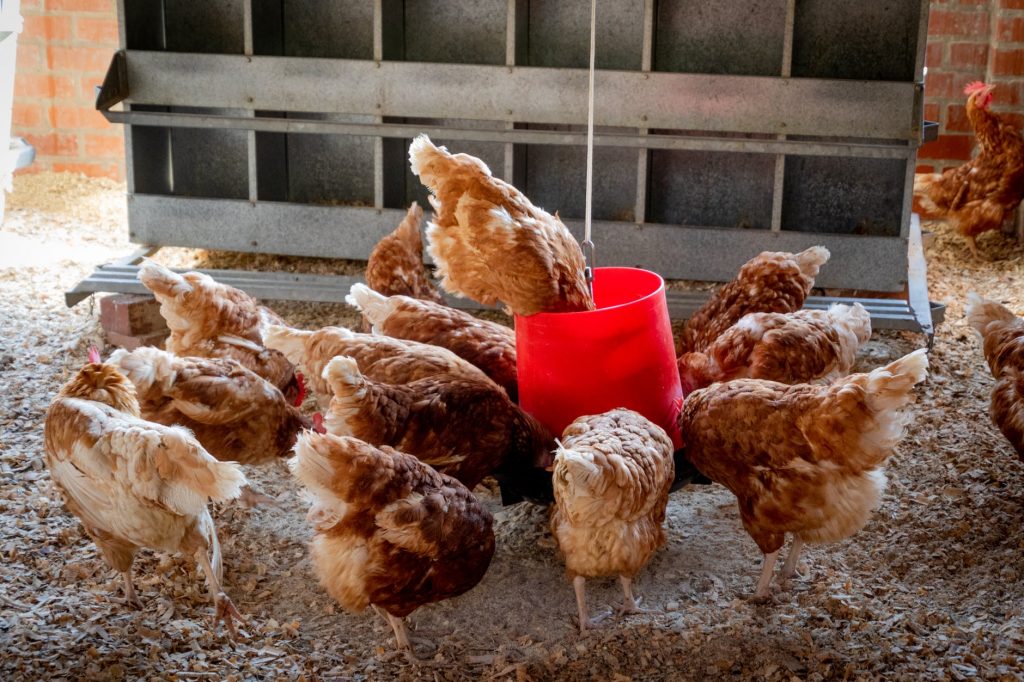It’s easy to spot the difference between a hen and a rooster. A hen has a smaller comb and waddle while roosters have relatively large ones. You’ll find hens laying eggs at least once a day (even without the presence of a rooster), while roosters are more aggressive, noisy, and are often seen crowing.
However, if you look at baby chicks, it is much harder to tell the difference between the two. Unlike most mammals like humans where you can tell the sex-based sex organs, chickens do not have penises or vaginas, only cloacae used for feces, urine, and reproduction. So, how can you tell the difference between male and female chicks? Here’s how.
Defining Chicken Terms
First, let’s define the different types of chicken names according to sex. The term “chicken” is the general name for these birds and is the name regardless of sex and breed. A Sussex chicken and a Leghorn chicken both fall under this name, for example, regardless of the fact that these are different breeds. In human terms, “chicken” would be the equivalent of “human,” regardless of sex or race.
A rooster is an adult male chicken. A male chick reaches maturity at about 4 to 5 months old as they start to produce sperm and show signs of sexual activity. This term is the human equivalent of a fully-grown man. On the other hand, a hen is an adult female chicken. A female chick will mature and start laying eggs as early as 6 months, but technically she cannot be called a hen until she is a year old as the name is based on age, not sexual maturity. This is the human counterpart of a “woman.”
The term “chicks” refers to younger chickens that have not reached maturity yet. These are the human equivalent of “children.” Male chicks are called “cockerels,” while female chicks are “pullets.”
Spotting a Rooster

Here are some signs that can help you distinguish a rooster from a flock of chickens:
- A rooster’s most distinctive feature is its crow. While other birds have similar crowing sounds, a rooster’s “cock-a-doodle-do” is very distinctive. Hens, however, do not crow and instead have a softer “cluck” unless agitated. Roosters are also much noisier than hens, so if you see a chicken that crows and generally make louder sounds, it’s a male.
- Roosters have large combs on top of their heads and waddles under their beaks. Even the biggest hens cannot have large combs and beaks, so it’s easy to spot a rooster by their combs with sharper triangles (hens’ combs have softer triangles) and droopier waddles.
- Roosters have longer, more curved, and colorful tail feathers.
- Roosters have leg spurs on the back of their legs. Unlike hens, roosters’ spurs become sharp within a year after the rooster matures.
- Roosters are more aggressive and are prone to fighting other roosters that seem like a threat or predators in the area.
Spotting a Hen

- Hens never crow, and in the same way, roosters never cluck. This is used to call their chicks to follow them.
- Hens have a higher-pitched chuckle which they use only for their chicks to signal to their offspring to eat what she has provided them with.
- Hens signal that they are laying eggs by their cackling.
- Hens do not have spurs at the back of their legs. Unlike roosters, they aren’t as aggressive and won’t fight other hens in their flock.
Determining the Sex of Young Chicks
Unfortunately, it’s difficult for everyday people to determine the sex of a chick since most of these signs do not show up in chicks until they are fully mature. At some point during their maturation, these features will start to show and separate the male chicks from the female ones. However, prior to this, they look both physically similar on the outside until such point that they begin to develop traits related to their sex.
Once cockerels mature into roosters – which should take about a year from their hatching – their spurs should start to develop. But it takes a year for a fully grown rooster to sharpen their spurs into ones that can actually hurt others when they get aggressive and start to fight.
Pullets, on the other hand, will eventually mature to the point that they start laying eggs. However, they can’t be called hens until a year after they’ve hatched because the term “hen” is based on age, not maturity. It’s similar to the way a heifer is always called a heifer even after it’s matured since the term “cow” is reserved for those that have reproduced and have their own calves.
Capons
A third and special type of chicken is called a “capon.” This is a young cockerel that was caponized (a form of neutering for chickens) and then left to mature. Because it has been castrated at a young age, a capon does not develop some traits shown by roosters and takes on features seen more commonly in hens.
This is done so that the capon can be fattened while maturing. Once it reaches a certain size, poultry farmers can sell their meat at a higher price since the meat is more flavorful due to the excess amount of fat a capon has.
Let’s recap what we’ve learned so far: chickens refer to the entire species, but roosters are male and hens are female. There are certain signs you can point out if you want to determine if a chicken is a male or female, but it could be difficult to determine for young chicks unless you’ve got an eye for detail and understand more about chickens’ bodies.

